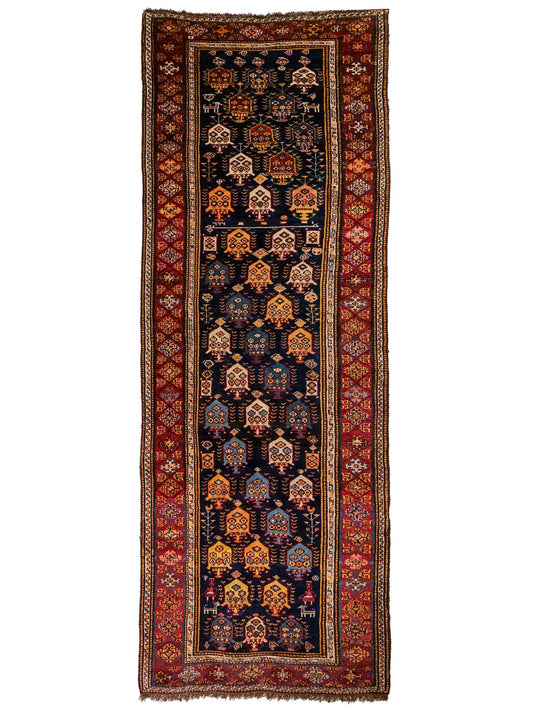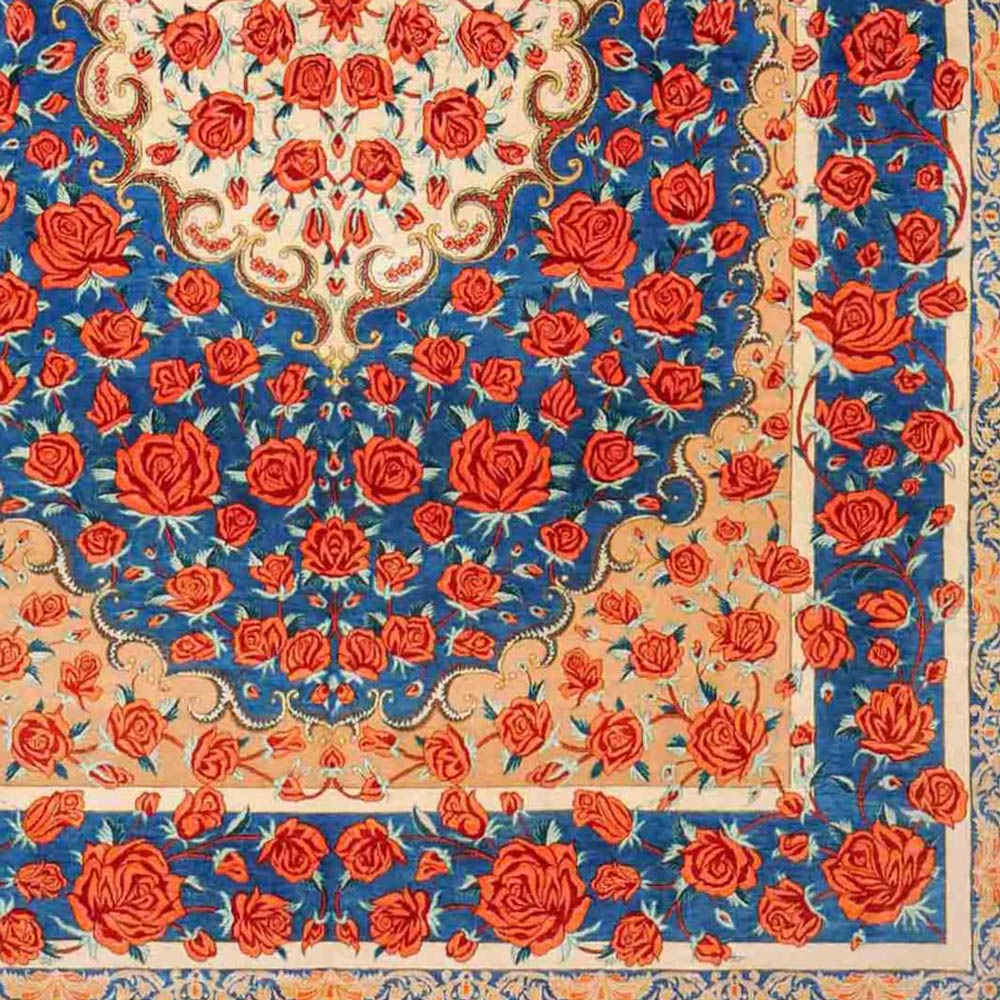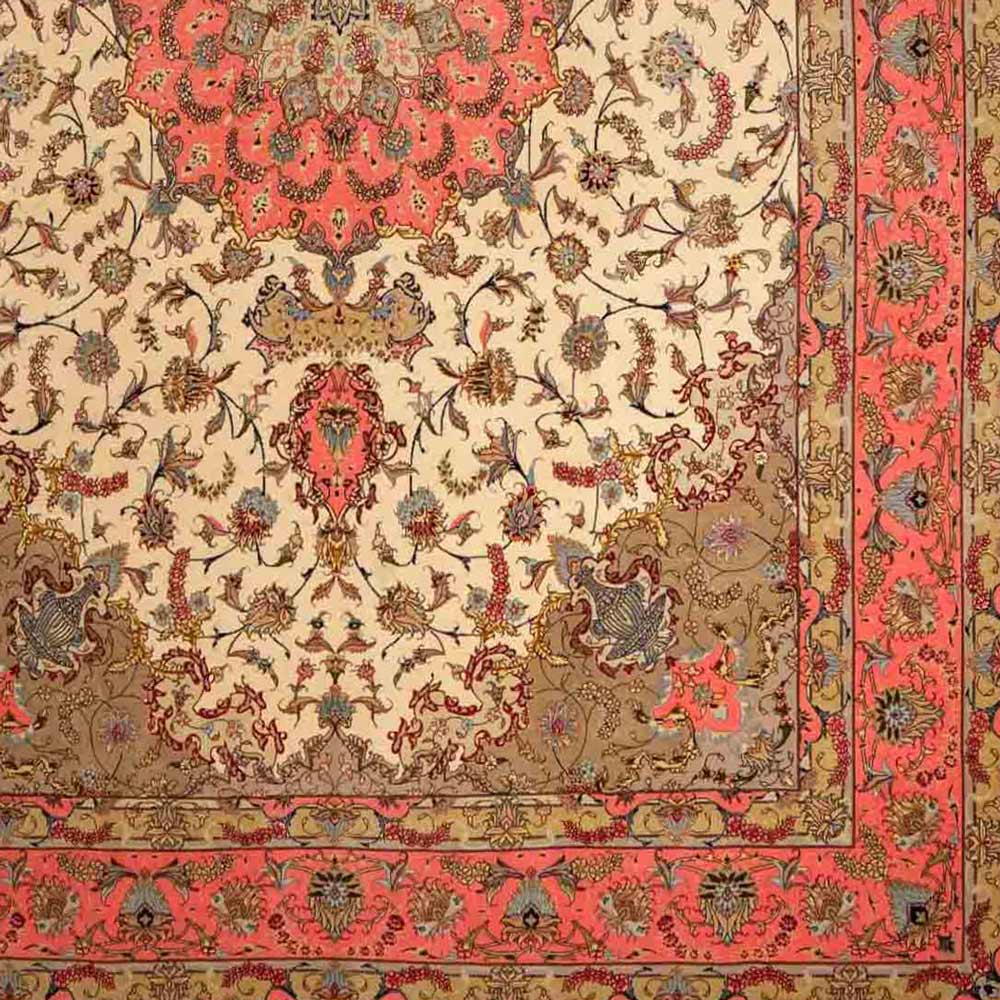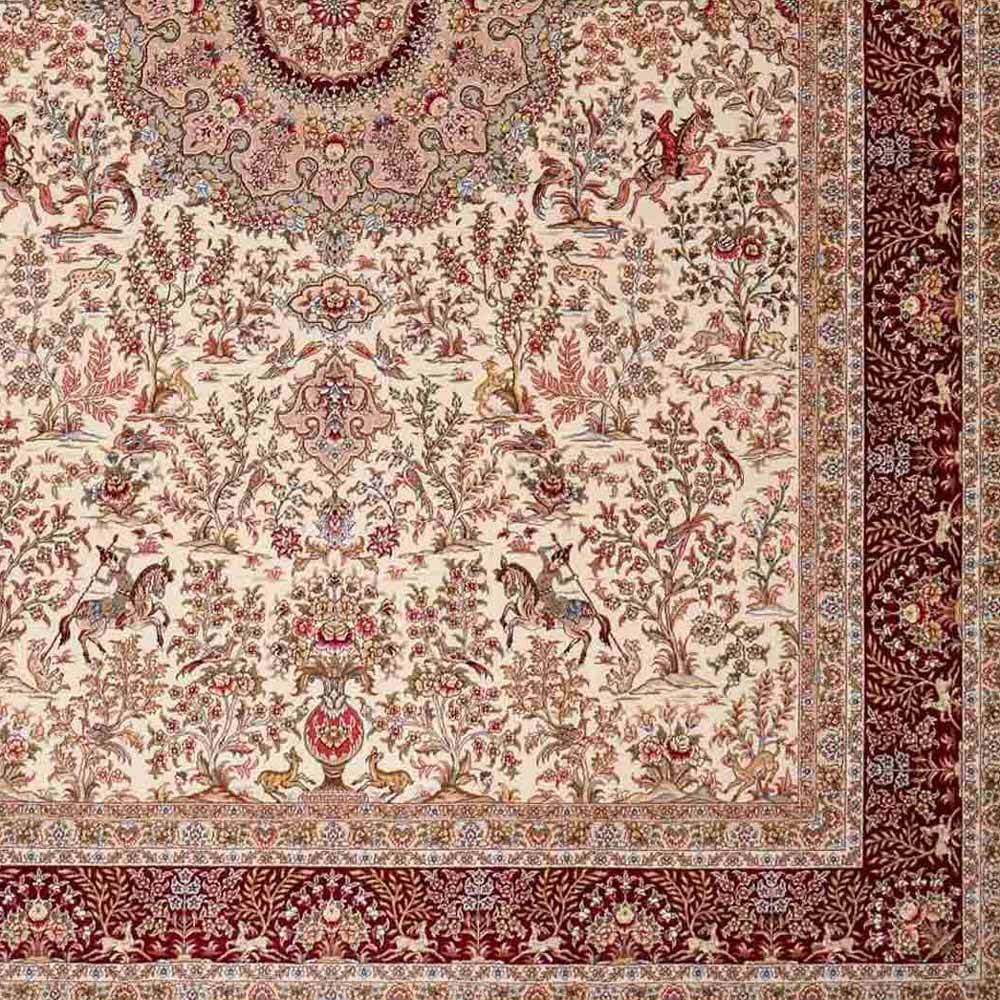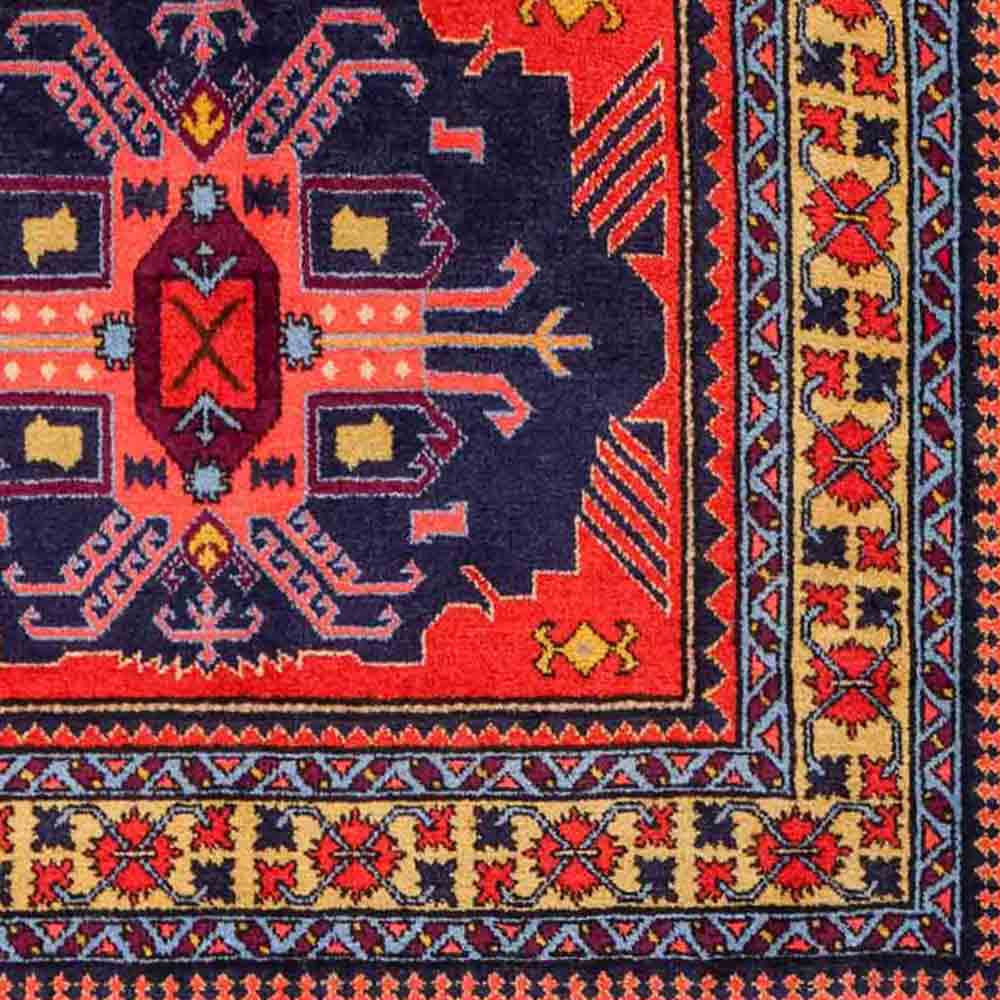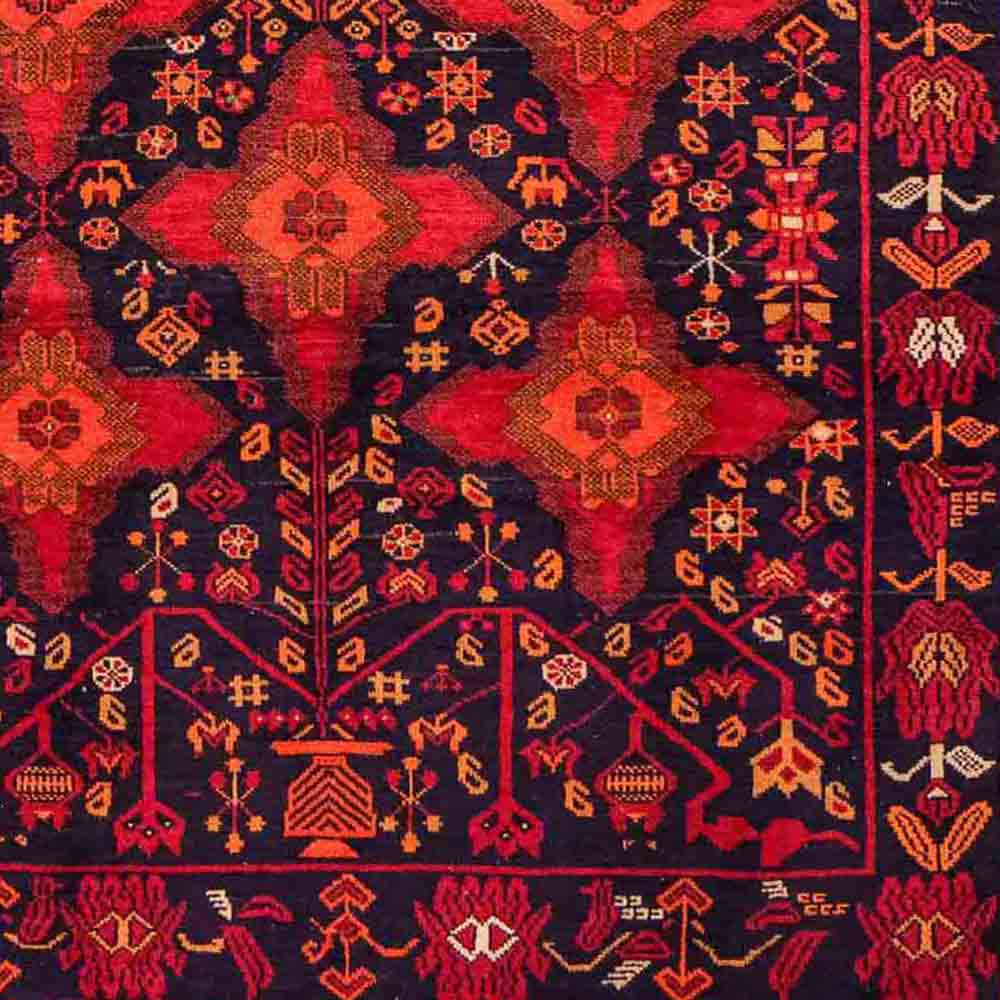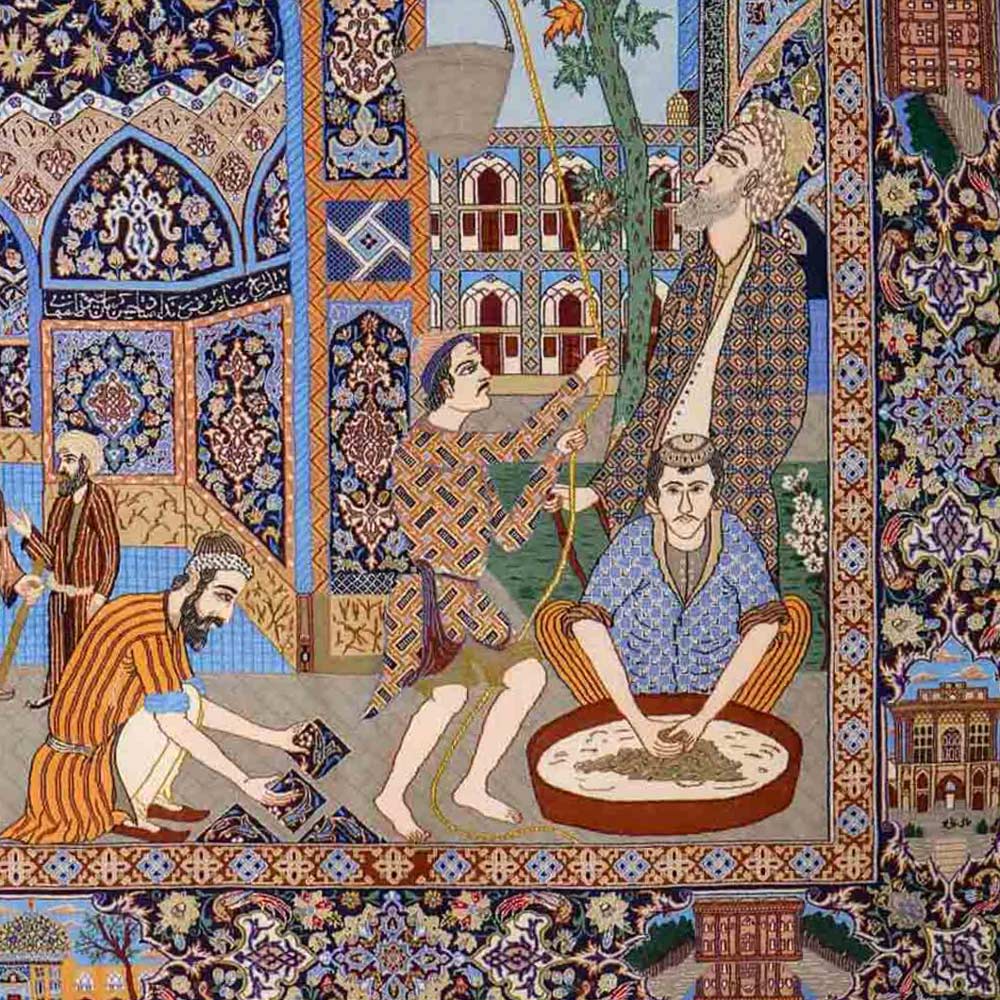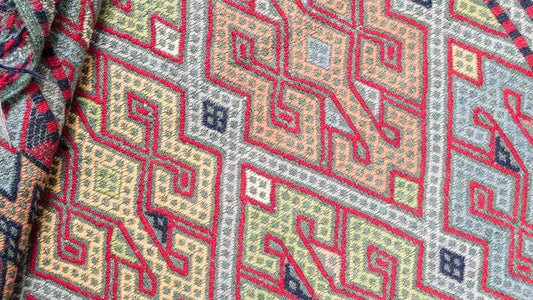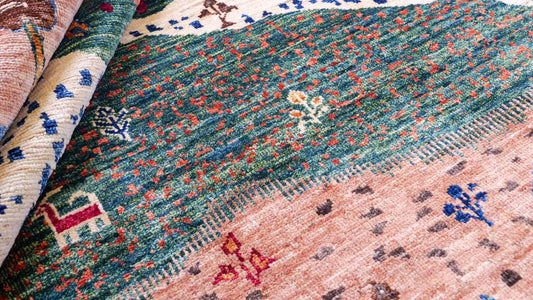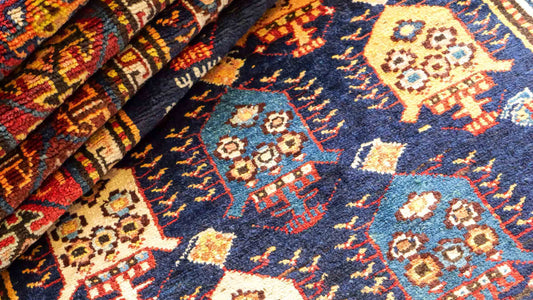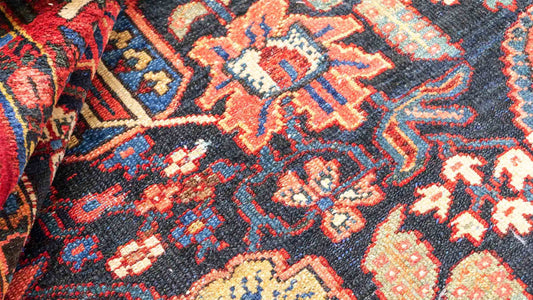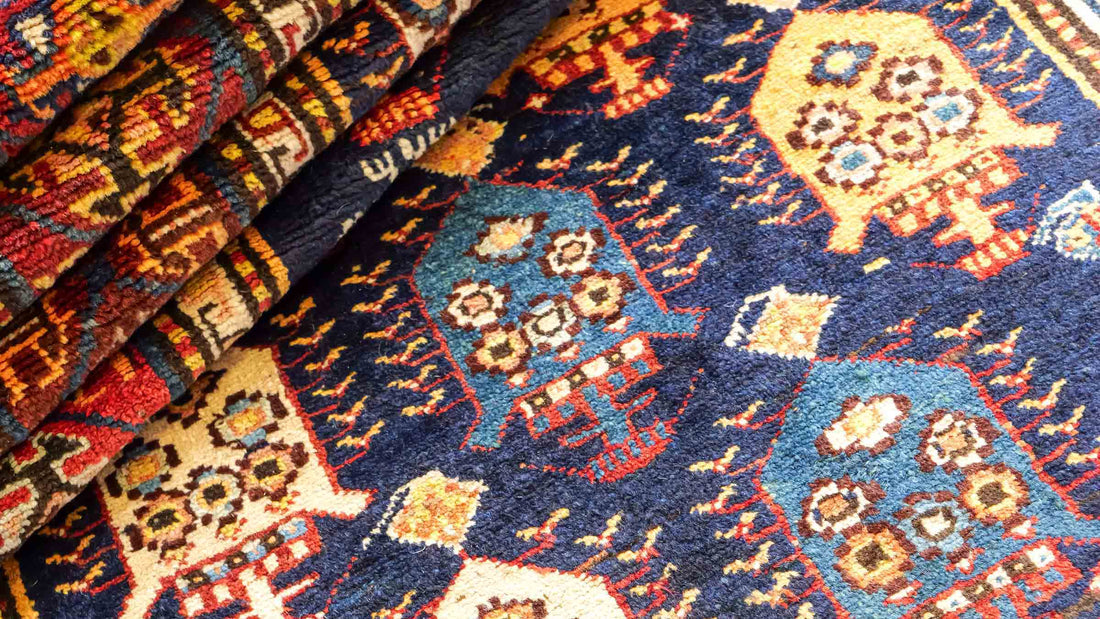
Ghashghai
Daniel KhademiGhashghai rugs captivate with their striking fusion of nomadic craftsmanship, diverse patterns, and vibrant colors. They embody the rich cultural heritage of the Ghashghai tribes of Iran—bringing authenticity and a touch of adventure to any home. Discover what makes genuine Ghashghai rugs so unique, how they are made, and what to consider when choosing and caring for your own piece.
Ghashghai Rugs: Key Facts at a Glance
- Origin: Fars region, southern Iran—traditional homeland of the Ghashghai nomads
- Materials: High-quality wool, occasionally with silk; natural plant-based dyes
- Design: Tribal, geometric patterns, lozenges, stylized animals, flowers, medallions & borders
- Knotting: Hand-knotted, typically 120,000–300,000 knots/m²—dense and robust
- Character: Nomadic, bold, expressive—every rug is one-of-a-kind
- Care: Durable and long-lasting—will serve generations with proper care
- Value: Sought-after collectibles, growing investment potential, genuine cultural heritage
- Suitable for: Exceptionally versatile—classic, modern, boho, rustic or Scandinavian spaces
Explore Ghashghai Rugs in our shop or request personal advice to find your perfect original!
Geography, History & Cultural Significance
Origins of Ghashghai Rugs
Ghashghai rugs originate from the Fars region in southern Iran, home to the nomadic Ghashghai tribes. This region, famed for its beautiful landscapes, gentle hills, and endless pastures, provides ideal conditions for raising sheep, whose wool is the foundation of these carpets. The Ghashghai have a storied history dating back to the 16th century, defined by a nomadic lifestyle and close harmony with nature. Their rugs reflect not just craftsmanship, but stories and traditions passed down from generation to generation.
Cultural Significance of Ghashghai Rugs
Ghashghai rugs are much more than mere decorative textiles; they are cultural expressions of the Ghashghai community’s identity and pride. These rugs are often featured at weddings and festivals, telling nomadic stories through their patterns and vibrant hues. Their value goes beyond practical use—they’re symbols of social status, artistry, and a rich oral heritage.
Manufacturing & Sustainability
Hand-Knotted Works of Art
The making of a Ghashghai rug is a complex, multi-step process demanding great skill:
- Wool Harvest: Wool is sourced from sheep that roam the Ghashghai highlands—renowned for its resilience and strength, perfect for rug making.
- Cleaning & Dyeing: After shearing, the wool is meticulously cleaned and then dyed using natural pigments from plants, minerals, or insects. These eco-friendly methods produce the rugs’ signature brightness and color intensity.
- Knotting: Skilled weavers use traditional looms—achieving knot densities of typically 120,000 to 300,000 knots per square meter. Such density guarantees the rug’s lasting beauty and intricate detail.
- Finishing: After weaving, the rug gets its final touches: all loose threads are trimmed and the rug is thoroughly washed before sale.
Buying Responsibly
When buying a Ghashghai rug, always ensure you know its origin and how it was made. Choose rugs from trusted sources that guarantee fair labor and eco-friendly materials. Purchasing directly from artisans supports this unique culture and helps keep the weaving tradition alive. Learn more about sustainability here: *How Sustainable Are Hand-Knotted Rugs?*
Motifs, Designs & Colors of Ghashghai Rugs
Ghashghai rugs are renowned for their diversity: geometric motifs, stylized symbols, and florals abound. The color palette ranges from bold reds and blues to warm earth tones, ensuring these carpets harmonize with every style—from modern to rustic, traditional to boho.
The Perfect Choice: Ghashghai Rug Selection Tips
Ghashghai rugs work beautifully as focal points in living areas: in the living room, they create a warm and inviting atmosphere; in dining areas, they add elegance; in offices, they inspire professionalism; and in bedrooms, they offer comfort and coziness. Thanks to timeless design, Ghashghai rugs work in a huge variety of settings—modern, Scandinavian, classic, or boho. When selecting, measure your space, consider furniture arrangement, and check knot density—a higher density means greater detail and resilience. Prioritize high-quality wool and a pattern that reflects both your taste and existing décor.
Village & Nomadic Rugs Compared: Bakhtiar · Ghashghai · Lori · Malayer
| Criteria | Bakhtiar | Ghashghai | Lori | Malayer |
| Origin | Western Iran (Isfahan, Chahar Mahal) | Southwest Iran (Fars), nomadic region | Southwest Iran (Luristan) | Western Iran (Malayer, Hamadan) |
| Material | Wool, cotton warp | Wool, cotton warp | Wool, cotton warp | Wool, sometimes silk, cotton warp |
| Knot Density | 120,000–300,000 knots/m² | 80,000–300,000 knots/m² | 100,000–300,000 knots/m² | 150,000–250,000 knots/m² |
| Design | Garden/field motifs, medallion, floral | Tribal, lozenges, animal/flower motifs | Primitive geometry, tribal art | Geometric, floral, medallions |
| Color Palette | Bold contrasts: red, blue, green | Bold red, blue, yellow, naturals | Earth tones, red, brown, orange | Red, blue, earth tones |
| Character | Distinctive, decorative, robust | Tribal, lively, expressive | Authentic, earthy, rugged | Rustic, detailed, artistic |
| Special Features | Iconic garden/field motifs, nomadic origin | Highly expressive nomadic carpet | Especially robust nomadic carpets | Extensive pattern variety, village roots |
| Value/Price | Mid to high | Entry to mid-range | Entry, very solid quality | Entry to mid-range |
Checklist: How to Identify Authentic Ghashghai Rugs
- Proof of origin or certificate from a reputable dealer ✔
- Pleasantly textured, matte virgin wool ✔
- Slight irregularities in the pattern are signs of genuine craftsmanship ✔
- Vibrant, natural dyes (predominantly red and blue tones) ✔
- Tribal, geometric motifs, medallions, animal and floral patterns ✔
- The back side reveals the design and a fine knotting structure ✔
- Handcrafted fringes and edges ✔
Care & Preservation of Ghashghai Rugs
How to Keep Your Ghashghai Beautiful for Generations:
- Vacuum regularly—never beat or shake
- Blot spills immediately with lukewarm water & a soft cloth
- Keep out of direct sunlight
- Have professionally cleaned every 1–2 years
- Get full care & value retention tips in our guide: *How to Care for Hand-Knotted Rugs*
Value & Investment: A Rug for Life
Ghashghai rugs offer excellent value. For a relatively modest price, you get not just a hand-knotted original but a robust product to enjoy for years—gaining character as time goes by. While generally in the lower to mid-price range and with no guaranteed appreciation, Ghashghai rugs are loved around the globe. Buying one supports the region’s local traditions and helps preserve an important cultural heritage.
► For in-depth advice, tips & tricks, see our blog post: *Are Hand-Knotted Rugs a Good Investment?*
Request a free personal style or purchasing consultation for Ghashghai rugs today!
FAQ – Frequently Asked Questions about Ghashghai Rugs
What makes Ghashghai rugs unique?
► Hand-knotted originals, tribal patterns, vivid coloration, rich cultural meaning—every rug tells its own story.
How should I care for a Ghashghai rug?
► Gentle vacuuming, immediate stain removal, keep out of sun, professional cleaning every 1–2 years. For more detailed advice, visit our blog post: *How to Care for Hand-Knotted Rugs*
Are Ghashghai rugs suitable for modern interiors?
► Absolutely! Their bold tribal designs create stunning contrast and work with almost any décor.
Are Ghashghai rugs a good investment?
► Originals with proven provenance and unique designs are always in demand and tend to hold their value—read more in our guide: *Are Hand-Knotted Rugs a Good Investment?*
Where can I buy authentic Ghashghai rugs?
► From specialized retailers or online shops. We always provide Certificate of Authenticity for all hand-knotted, hand-tufted, and hand-woven rugs.
Conclusion: A Piece of Iranian Culture for Your Home
In sum, Ghashghai rugs are much more than practical floor coverings—they are true works of art, steeped in cultural history. These rugs don’t just offer style and elegance, but showcase the skill and tradition of the Ghashghai tribes. With the right selection, care, and understanding of their origins, you can bring a lasting piece of Iranian heritage into your home. Choose a Ghashghai rug and be inspired by its enduring beauty and uniqueness.
Request your personal consultation or explore our current Ghashghai Collection now!
Related blogs & blog posts you might also be interested in:
→ Design Classics, Countries of Origin, Carpet Materials, Carpet Guide

